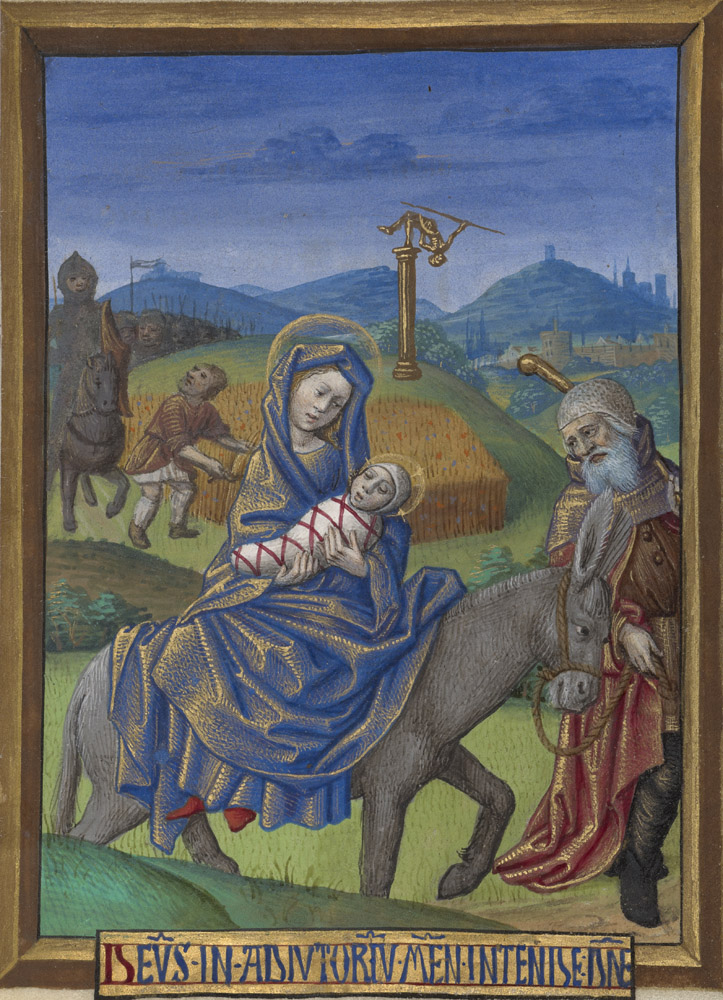
Georges Trubert
The Flight Into Egypt (The Wheat Miracle)
French, circa 1480-90
Tempera, gold and silver paint, and ink on parchment
The Getty Center, Los Angeles, California
In the later Middle Ages some Flight into Egypt images reflected a legend current at the time that Schiller summarizes in her study of the subject (I, 122): Herod's soldiers are still searching for Jesus when the Holy Family passes by a field where peasants are sowing wheat. Mary asks them to tell anyone who asks that she and the child passed by when the wheat was being sown. Miraculously, wheat grows up and is ready for sowing the next day. When the soldiers interrogate the peasants, they can truthfully say that they saw the family when the wheat was being sown. Making Mary the world's first Jesuit.
So far I have not been able to track down an actual medieval text of the legend, but the wide distribution of the images makes it certain that there must be one.
The figure falling from the column in the background refers to another legend recorded in pseudo-Matthew (ch. 22-24) and The Arabic Gospel of the Infancy of the Savior: When the family arrives in Sotinen in Egypt, all the idols in the city's temple fall down and break into pieces.
In other ways, this miniature observes the central conventions that obtain in almost all Flight into Egypt images. Mary sits on the ass with the child on her lap, while Joseph walks the animal and carries his staff. In this period it was common to portray him as an old man.
Read more about the Flight into Egypt.
Source: The J. Paul Getty Museum